MotorTrend unveils Truck of the Year on 'Fox & Friends'
Head of editorial Ed Loh reveals that the Ford F-150 Lightning is named Truck of the Year, the first EV to win the award.
National Geographic has released its roundup of the most intriguing photos of 2022.
The brand’s "Pictures of the Year" issue showcased stunning photography captured in locations all around the world — and right here in the U.S. as well.
Of a whopping 2,238,899 total photos snapped by NatGeo’s team of photographers, 118 were selected as the top shots.
FIVE US DESTINATIONS MADE NATIONAL GEOGRAPHIC'S ‘BEST OF THE WORLD’ TRAVEL LIST: ARE YOU SURPRISED?
The pictures were taken with the help of 4,000 pounds of gear shipped into the field by NatGeo staff photo engineer Tom O’Brien.
The images capture everything from scenic Mount Everest views to a tapir strolling through Emas National Park in Brazil.
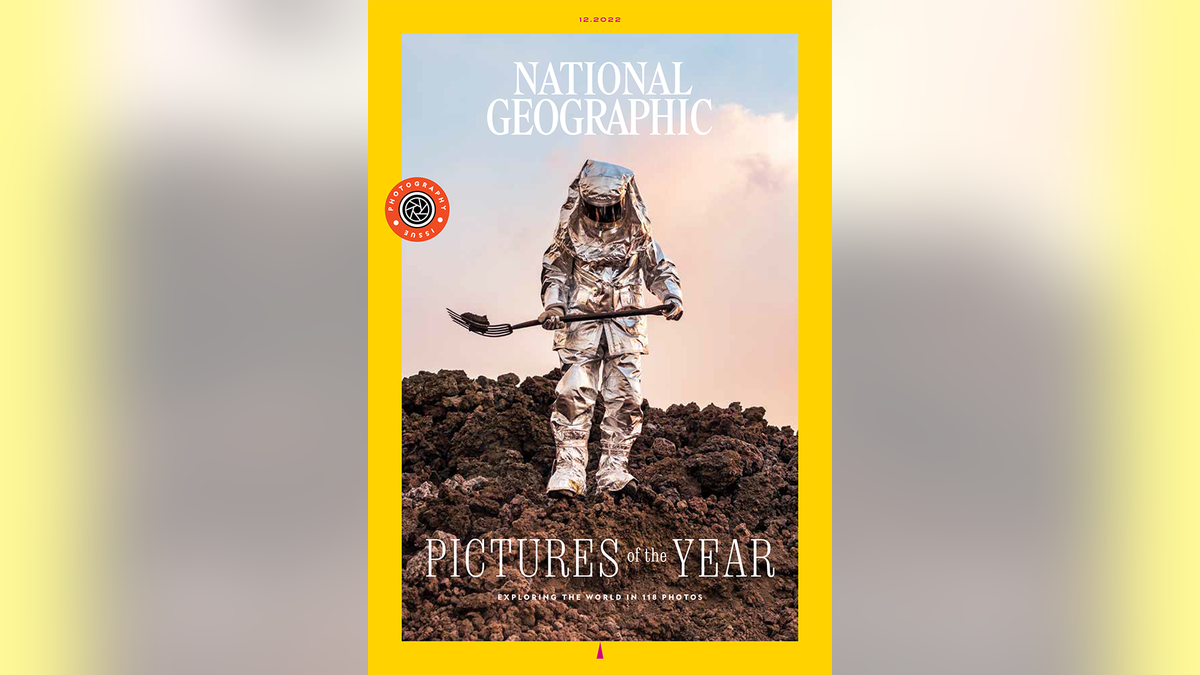
The cover of National Geographic's December 2022 issue is shown here. (National Geographic)
Here are 10 of National Geographic’s best photos of the year.
SpaceX Falcon 9 rocket launch over Blue Cypress Lake, Florida
Photographer Mac Stone caught the SpaceX Falcon 9 rocket launching from Cape Canaveral in the early hours of June 19, 2022.
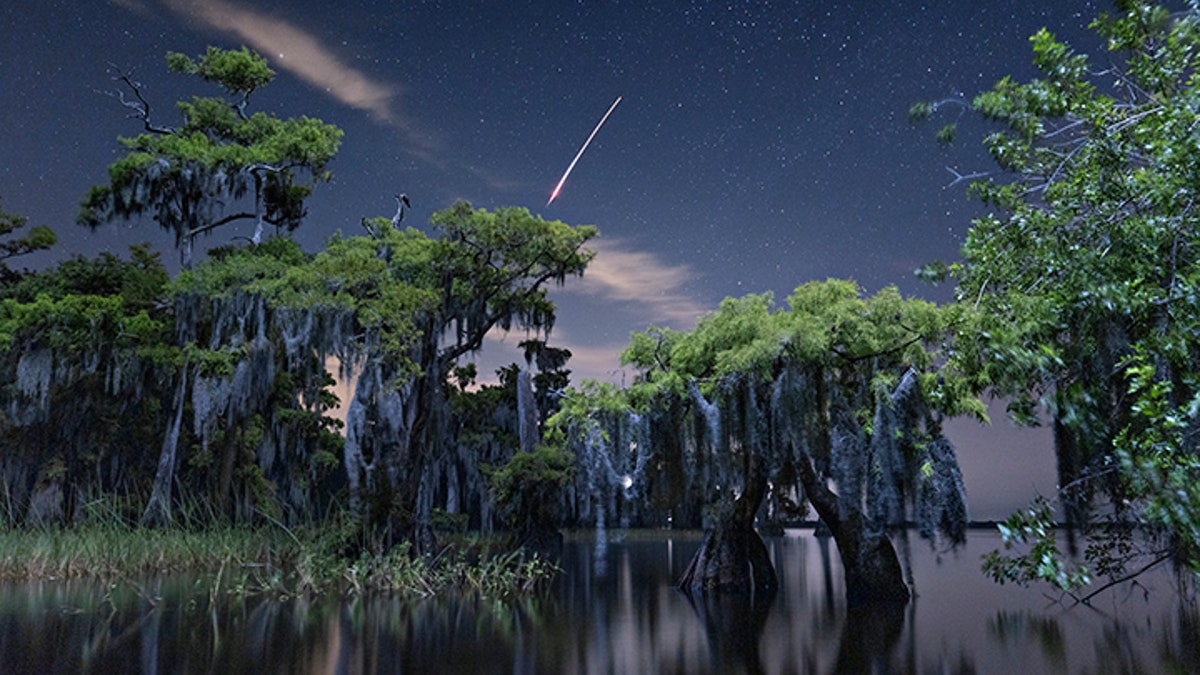
A SpaceX Falcon 9 rocket, launched from Cape Canaveral in the early hours of June 19, streaks above a stand of bald cypress trees. (Mac Stone)
The rocket left a bright streak in the sky over bald cypress trees in Florida’s Blue Cypress Lake.
This was the second time a SpaceX rocket snuck into one of Stone’s frames while he was photographing at night in a remote swamp, according to National Geographic.
TERRIFYING CLOSE-UP OF AN ANT'S FACE GIVES HORROR MOVIE MONSTERS A RUN FOR THEIR MONEY
Stone said in a statement that the increased frequency of launches without fanfare "suggests that we have crossed over into a new era where cosmic missions are simply business as usual."
‘Combined’ photo of Bears Ears National Monument, Utah
Photographer Stephen Wilkes told Fox News Digital that he and his team endured rough terrain and windy weather to grab this unique shot of Bears Ears National Monument in Utah.

To create this image of Bears Ears, Stephen Wilkes took 2,092 photos over 36 hours, combining 44 of them to show a sunrise, a full moon and a rare alignment of four planets. This landscape in southeastern Utah shows the risk to some of the country’s unique, irreplaceable places. The national monument is rich in archeological sites, including the Citadel, an ancient cliff dwelling now popular with hikers. (Stephen Wilkes/National Geographic)
Wilkes took 2,092 photos over 36 hours and combined 44 of them, according to National Geographic, to show the sun, a full moon and the alignment of four planets.
CALIFORNIA CLIMBER LEADS FIRST-KNOWN ASCENT OF ONE OF THE TALLEST CLIFFS ON EARTH
"Beyond the sense of awe and beauty, there’s a palpable sense of history with every step you take," he said.
Collecting samples from La Palma’s Cumbre Vieja eruption in Canary Islands, Spain
Spanish military emergency specialist Armando Salazar was photographed collecting samples from the eruption of La Palma’s Cumbre Vieja volcanic ridge in Canary Islands, Spain.
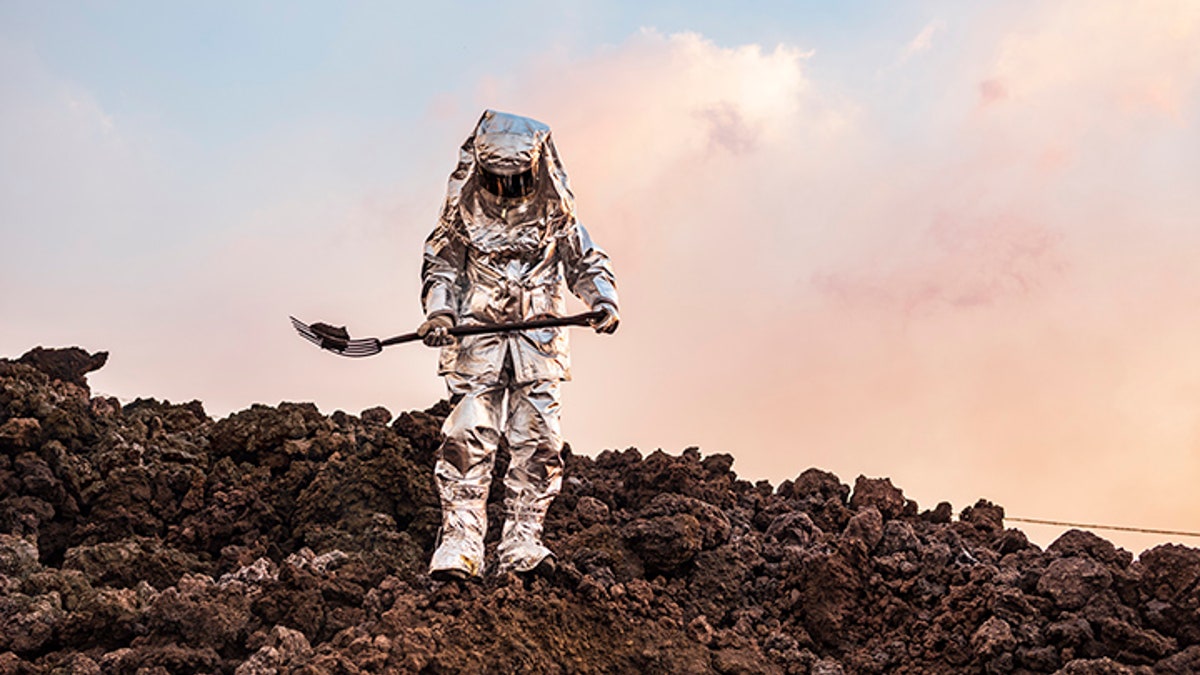
Wearing a protective suit, Armando Salazar steps carefully across sizzling rock, carrying a chunk of glowing lava on a pitchfork. (Arturo Rodriguez)
Photographer Arturo Rodriquez snapped a photo of Salazar doing his everyday duty as he steps across sizzling rocks and collects lava on a pitchfork.
Samples from the 2021 eruption can help scientists better understand the 86-day event and the site’s potential for future blasts, National Geographic explained.
This photo made the cover of National Geographic’s December 2022 "Pictures of the Year" issue.
Blur of tourists at Lincoln Memorial in Washington, D.C.
The Lincoln Memorial, visited by thousands of tourists each year, celebrated its centennial in 2022.

A long camera exposure blurs the crowd of tourists gathered inside the Lincoln Memorial in Washington, D.C. (Sasha Arutyunova/National Geographic)
Photographer Sasha Arutyunova captured the hustle and bustle of tourism surrounding Washington, D.C.’s presidential monument made from 38,000 tons of marble, limestone and granite.
The long camera exposure blurs the crowds of different passersby who’ve treated the monument as a backdrop for protests, prayer vigils and celebrations of all kinds this year.
"In using a long exposure, I was trying to capture a feeling of the sea of visitors to the memorial each year, while positioning the Lincoln statue as this steady constant," Arutyunova said.
Mother and daughter shelter from bombings in Przemysl, Poland
Mother-daughter duo, both named Oksana Hapbarova, embrace for a photo taken by photographer Anastasia Taylor-Lind.
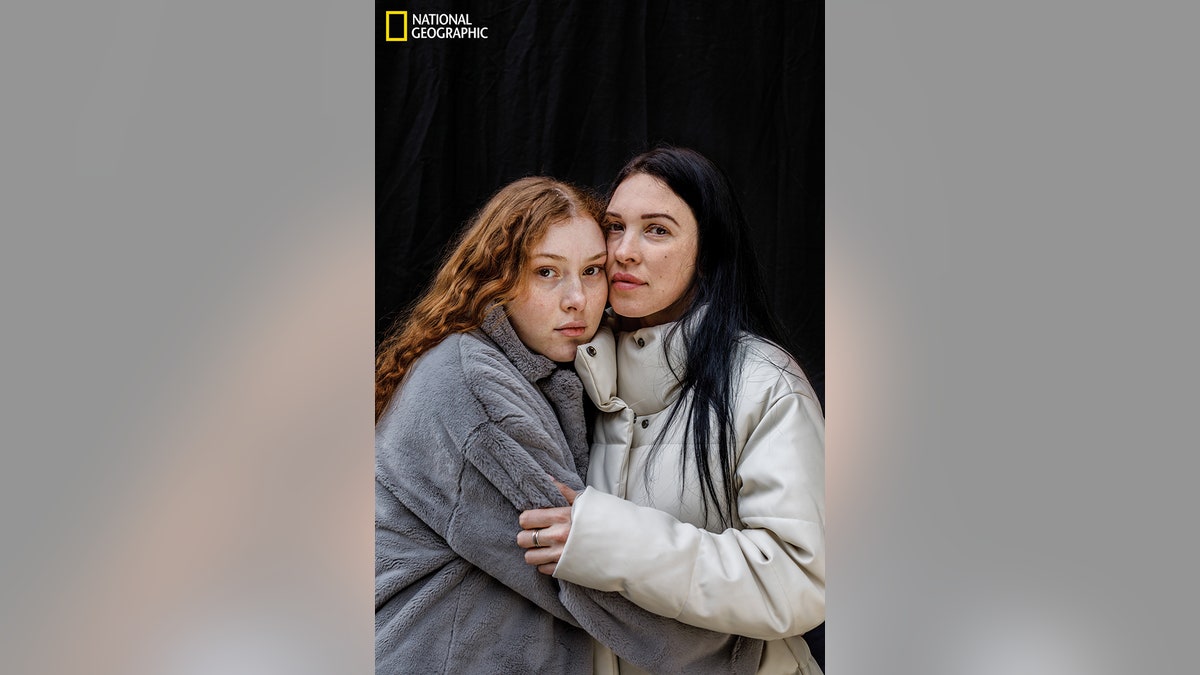
Oksana Hapbarova (at left), 18, said that she and her mother (also named Oksana, 39), waited out Russian attacks in a Kyiv bomb shelter. (Anastasia Taylor-Lind/National Geographic)
The pair waited out Russian attacks in a Kyiv bomb shelter at the onset of the war in Ukraine.
"For six days in the shelter, I couldn’t sleep, because I was scared I would never wake up," the younger Hapbarova said.
Sailing between two icebergs in Greenland
Photographer Renan Ozturk made a risky move when he launched his camera drone from a moving boat to grab this shot.
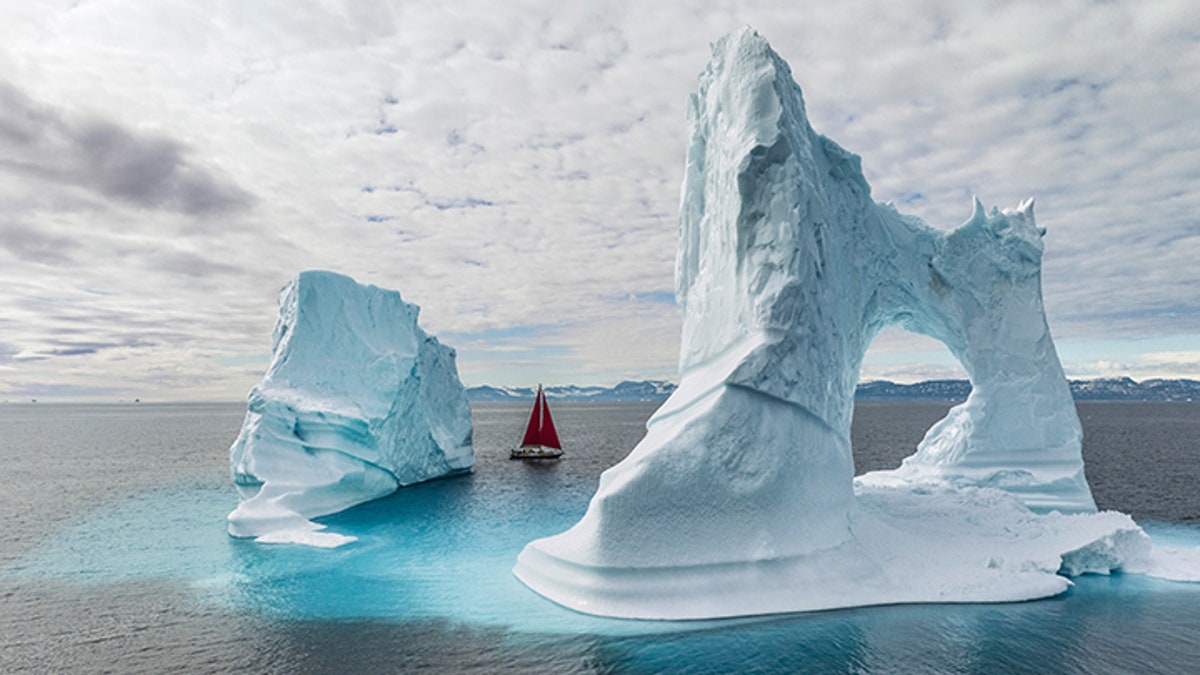
Five weeks into the journey of the National Geographic expedition ship Polar Sun, photographer Renan Ozturk found himself exploring a bay off the coast of Greenland. The boat played peekaboo with pale blue icebergs as Ozturk readied his camera drone and held his breath. (Renan Ozturk/National Geographic)
The National Geographic expedition ship Polar Sun was five weeks into its journey when Ozturk went exploring off the coast of Greenland.
As the ship veered between two ice-blue icebergs, Ozturk told National Geographic that he took a chance on getting the photo from the air.
"Launching the drone from a moving boat is always a dangerous and exciting affair," he said. "It was truly a once-in-a-lifetime experience to shoot such a feature."
A tapir beneath a harvest moon in Emas National Park, Brazil
Photographer Katie Orlinsky told Fox News Digital that this vivid shot of a tapir took a lot of patience and pure luck.
The tapir named Preciosa was spotted on a hazy morning under a harvest moon in Brazil’s Emas National Park.
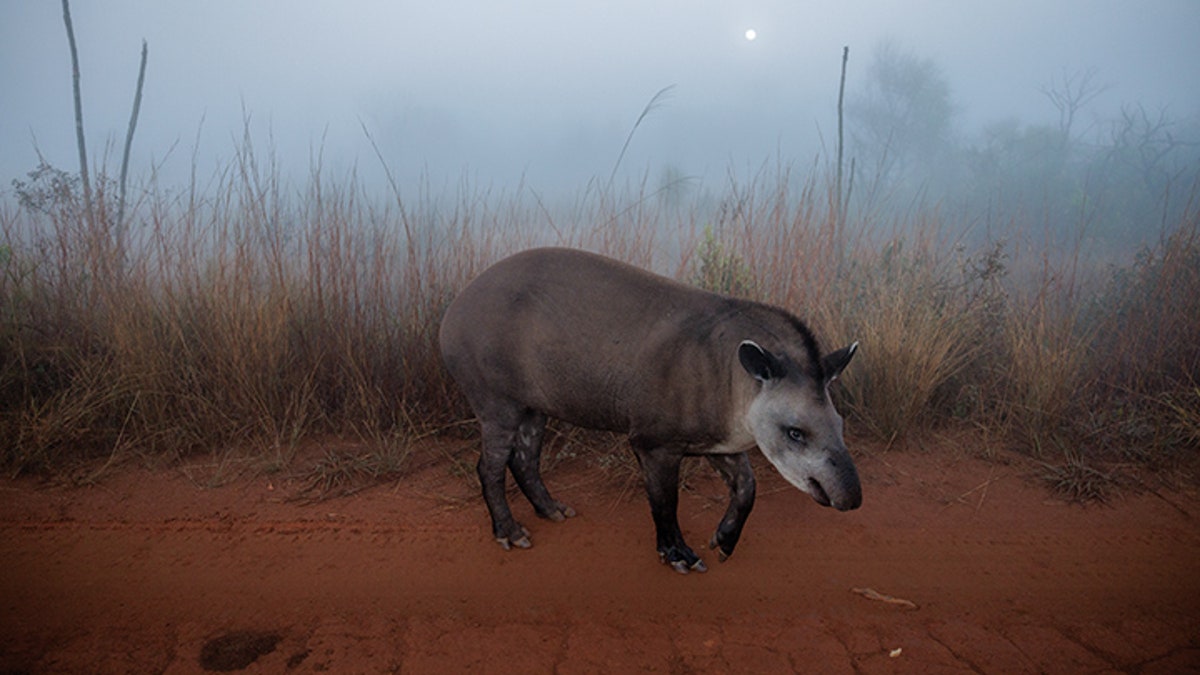
Under a harvest moon on a hazy morning in Brazil’s Emas National Park, a lowland tapir known to park staff as Preciosa ambles down a road. (Katie Orlinsky/National Geographic)
Preciosa wandered down the road as Orlinsky doubted ever spotting her again — but she noted how animals can behave strangely under full moons.
"It was definitely not this tapir’s usual route," she told National Geographic.
The tapir species dates back some 50 million years as one of the few survivors of the Ice Age extinctions of megafauna — or really big mammals like mammoths.
Today, tapirs like Preciosa help regrow Brazil’s degraded forests by eating fruit and spreading seeds, according to NatGeo.
Unfortunately, according to the International Union for Conservation of Nature, all tapir species are either threatened or endangered.
Recording baby brain activity – University of Virginia
Neuroscientists at the University of Virginia recorded the brain activity of nine-month-old Ian Boardman.

University of Virginia neuroscientists record the brain activity of nine-month-old Ian Boardman while brushing his skin to activate nerve fiber responses. (Lynn Johnson/National Geographic)
Photographer Lynn Johnson caught the moment in which baby Ian looks up and smiles at a doctor who’s brushing his skin to activate nerve fiber responses.
Western Arctic caribou herd in Kobuk River Valley, Alaska
Photographer Katie Orlinsky used a drone to photograph a group of caribou trekking across the Alaskan landscape.

Captured via drone, caribou from the Western Arctic herd gallop across a valley near the small town of Ambler during their spring migration. (Katie Orlinsky/National Geographic)
The Western Arctic herd is seen galloping across the Kobuk River Valley near the small town of Ambler, National Geographic reports, during its spring migration.
THREE US DESTINATIONS MAKE LONELY PLANET'S ‘BEST PLACES TO VISIT’ IN 2023: CAN YOU GUESS THE PICKS?
While caribou populations throughout North America are dwindling, the Western Arctic herd has also been whittled down to a record low of less than 200,000.
Hyenas at night in Masai Mara National Reserve, Kenya
This nighttime photo, taken by photographer Jen Guyton with an infrared camera, catches two hyenas baring teeth — and a little one caught in the middle.
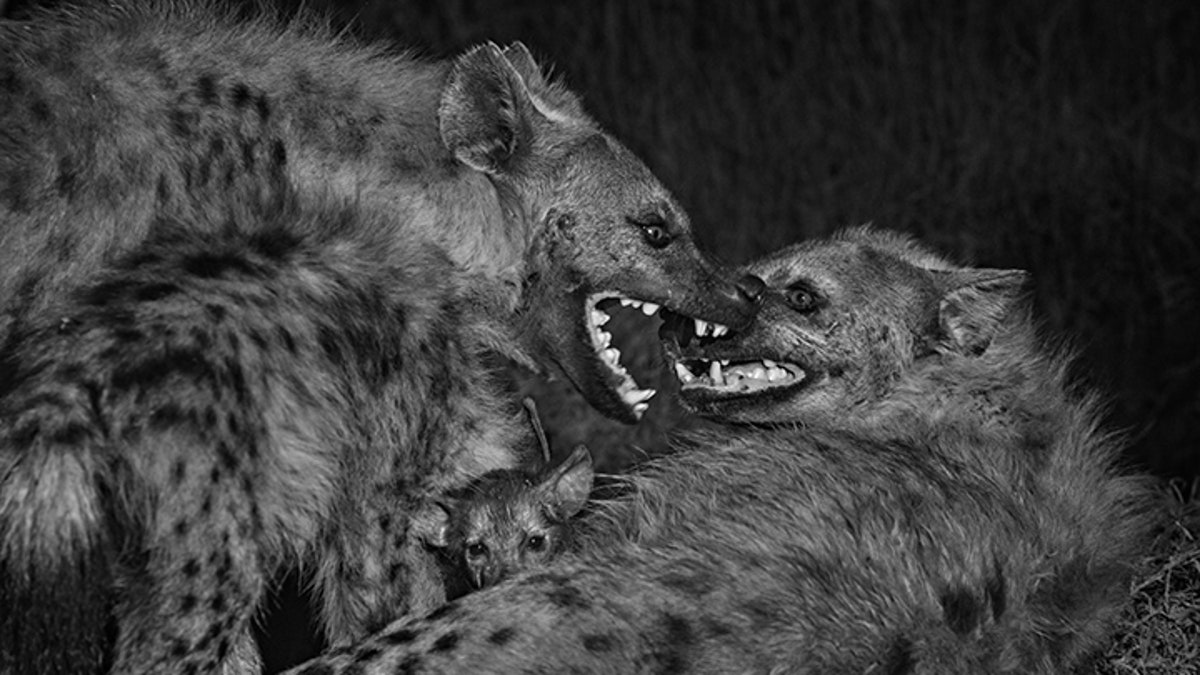
Photographed at night with an infrared camera, a spotted hyena that scientists nicknamed Palazzo submissively grins and lays her ears back as Moulin Rouge, the clan’s dominant female at the time, towers over her. (Jen Guyton/National Geographic)
A dominant hyena female — named Moulin Rouge by scientists — towers over a submissive hyena called Palazzo, as Palazzo’s cub peers out in between them.
CLICK HERE TO GET THE FOX NEWS APP
The African predators showed their frisky nature, stealing a tripod from Guyton during the shoot.
CLICK HERE TO SIGN UP FOR OUR LIFESTYLE NEWSLETTER
Anyone who would like to see more of this year's best photos from National Geographic can visit its website.





















